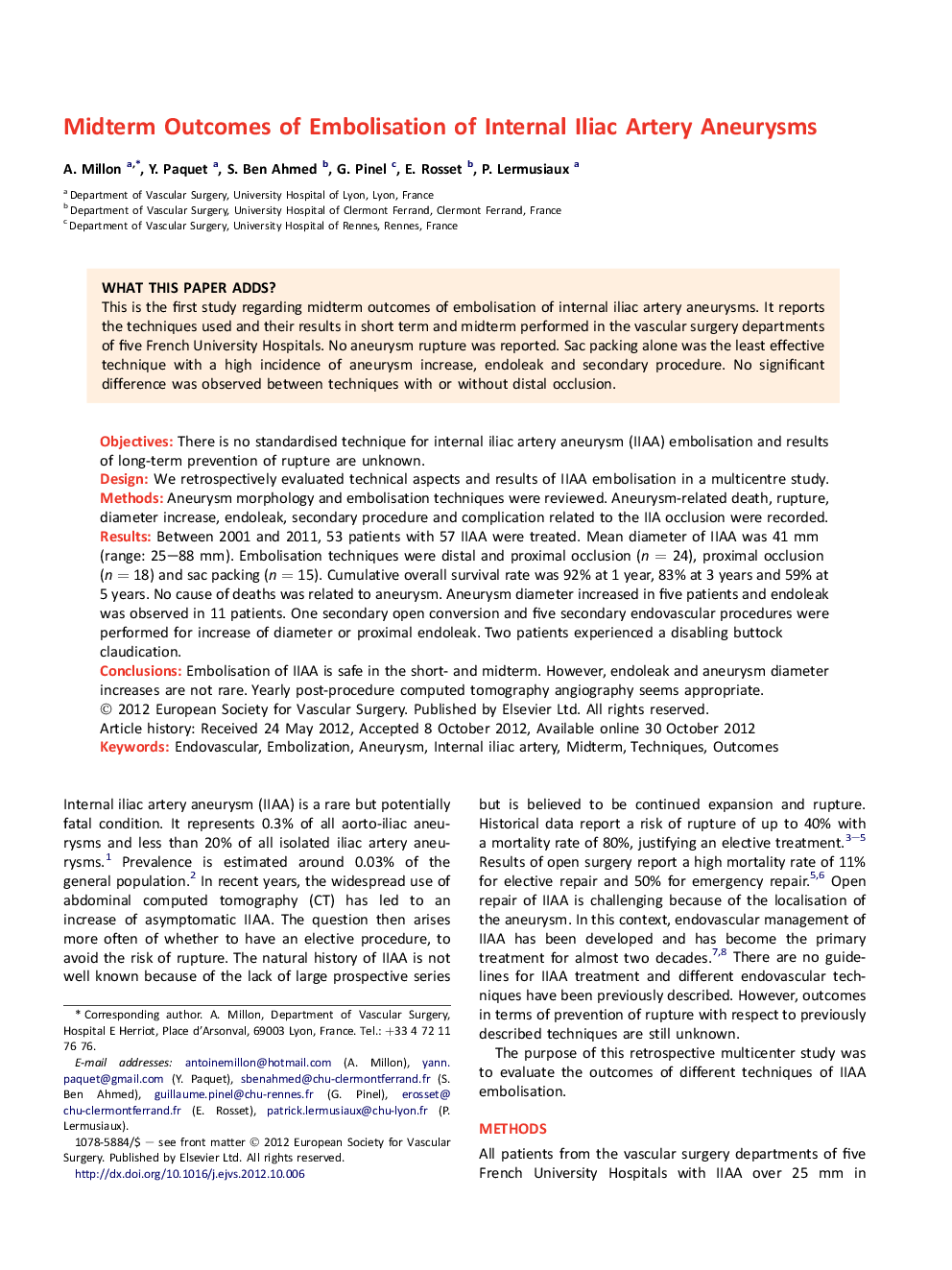| Article ID | Journal | Published Year | Pages | File Type |
|---|---|---|---|---|
| 2912365 | European Journal of Vascular and Endovascular Surgery | 2013 | 6 Pages |
ObjectivesThere is no standardised technique for internal iliac artery aneurysm (IIAA) embolisation and results of long-term prevention of rupture are unknown.DesignWe retrospectively evaluated technical aspects and results of IIAA embolisation in a multicentre study.MethodsAneurysm morphology and embolisation techniques were reviewed. Aneurysm-related death, rupture, diameter increase, endoleak, secondary procedure and complication related to the IIA occlusion were recorded.ResultsBetween 2001 and 2011, 53 patients with 57 IIAA were treated. Mean diameter of IIAA was 41 mm (range: 25–88 mm). Embolisation techniques were distal and proximal occlusion (n = 24), proximal occlusion (n = 18) and sac packing (n = 15). Cumulative overall survival rate was 92% at 1 year, 83% at 3 years and 59% at 5 years. No cause of deaths was related to aneurysm. Aneurysm diameter increased in five patients and endoleak was observed in 11 patients. One secondary open conversion and five secondary endovascular procedures were performed for increase of diameter or proximal endoleak. Two patients experienced a disabling buttock claudication.ConclusionsEmbolisation of IIAA is safe in the short- and midterm. However, endoleak and aneurysm diameter increases are not rare. Yearly post-procedure computed tomography angiography seems appropriate.
